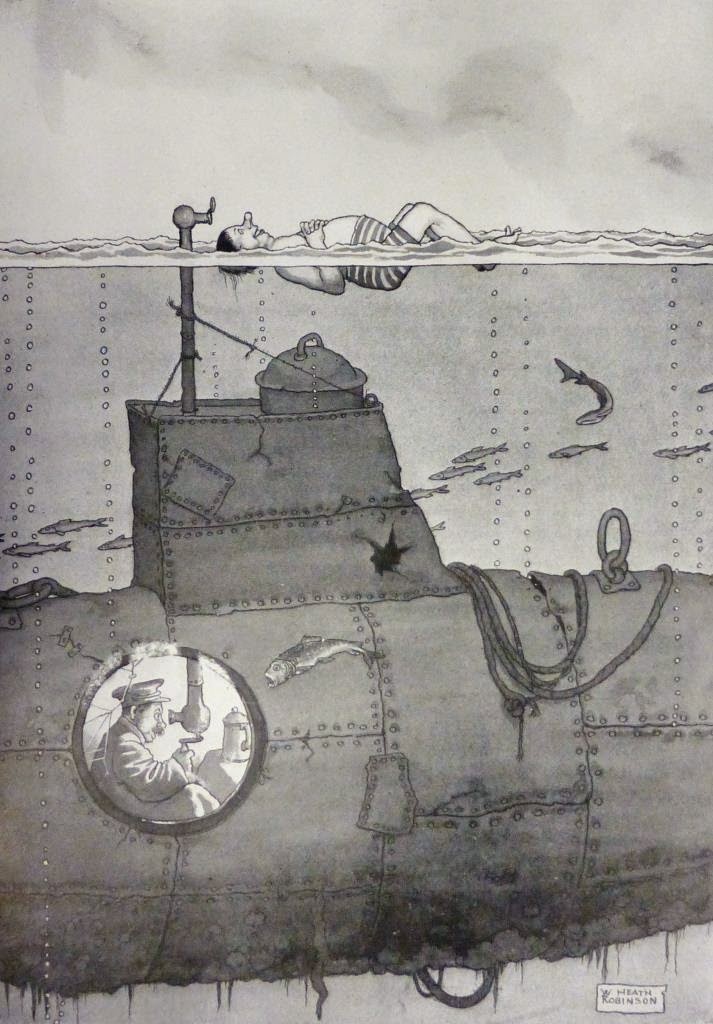Image credit: © IWM
In common with residents of other
British coastal towns, Budleigh Salterton people were only too aware of the threat
from the Imperial German Navy.
On
the morning of 16 December 1914, the North Sea ports of Hartlepool, West
Hartlepool, Whitby and Scarborough were bombarded by the German First High Seas
Fleet Scouting Group. 137 people lost their lives and 592 people were
wounded. The above poster uses the incident to try and encourage people
to enlist, but the British public and newspapers were also outraged at the
Royal Navy for not protecting the towns.
Scarborough and
Hartlepool were fortified towns and were considered legitimate targets by the
Germans. While Budleigh Salterton did not fall into that category local people
were aware of the threat to the many passing convoys from enemy submarines. Although Germany’s surface fleet failed to achieve
many of its objectives its submarine force posed a major threat to the British
supply system.
German submarines at Kiel, Schleswig-Holstein, on 17 February 1914. U 21 is at the far right of the first row. The caption in German reads: "Our submarine boats in the harbour" (in German).
Image
source: German Federal Archives and Wikipedia
As early as 5 September 1914, the underestimated U-boat had shocked the British public when SM U-21 hit the 3,000-ton British light cruiser HMS Pathfinder with a torpedo off the Firth of Forth on a calm, sunlit day. Broken in two, Pathfinder instantly began sinking, dragging most of her crew down with her and leaving a massive pall of smoke to mark her grave. The vessel sank so quickly, in fact, there was insufficient time to launch lifeboats. Of a total of 270 personnel on board including two civilian canteen assistants there were just eighteen known survivors.
Convoys, particularly of merchant ships escorted by Navy warships, were indeed a regular sight off the Budleigh coast. Local resident Jim Gooding, as recorded in the book Budleigh in bygone days, remembered them passing on most days, mainly in the evening, and was struck by how close to the shore they sailed. “There were times when it was miraculous that they did not run aground.”
As a member of the
Coast Patrol, he recalled that it was his duty to see that no light was visible
from the sea because of the danger from enemy submarines.
The convoys were, as described by William Cowd, another
Budleigh resident, “a most impressive
sight.” In his memoirs kept at Fairlynch Museum he recalled being first on the
scene when a dozen crew members of a merchant ship arrived on the beach near
the present Marine Court flats on Marine Parade. Their ship had been torpedoed
and the crew, taking to the life boat had rowed about 12 miles to the shore.
Their cries of “Shipwreck Crew” were heard, but William Cowd also heard a
warning from his companion: “You be careful, you be careful, it may be enemy
Germans who’ll shoot you.”
Such was the fear of enemy submarines, as intense
as that of German spies, that one might guess it verged on the paranoid.
“One morning, looking from the windows of
‘Matford’ on Marine Parade I saw the periscope of a submarine in the Bay,”
remembered Winifred Hart in another memoir kept at Fairlynch Museum. “The sea
was quite calm. It was probably a German one as we had so many convoys of ships
passing during the War.” [Source: Mrs Hart’s Memories of 1914-18, a document in Fairlynch Museum Local History Room,
1980].
The caption shows a German Periscoper exclaining: "Ach, Himmel! Dot most be der peautiful Ben Nevis of vich ve 'ave 'eard so mooch!"
From
the 1915 edition of Frightful War Pictures by W. Heath Robinson published by Duckworth
German periscopes were probably 'spotted' as
frequently as suspected enemy spies. At least for cartoonists like Heath
Robinson they could be a source of humour.
‘The Great War at Fairlynch’ 2015 exhibition at Budleigh Salterton’s very special museum! Reviews included: “Wonderful display on WW1, informative, bright and relevant. Well done!!





No comments:
Post a Comment